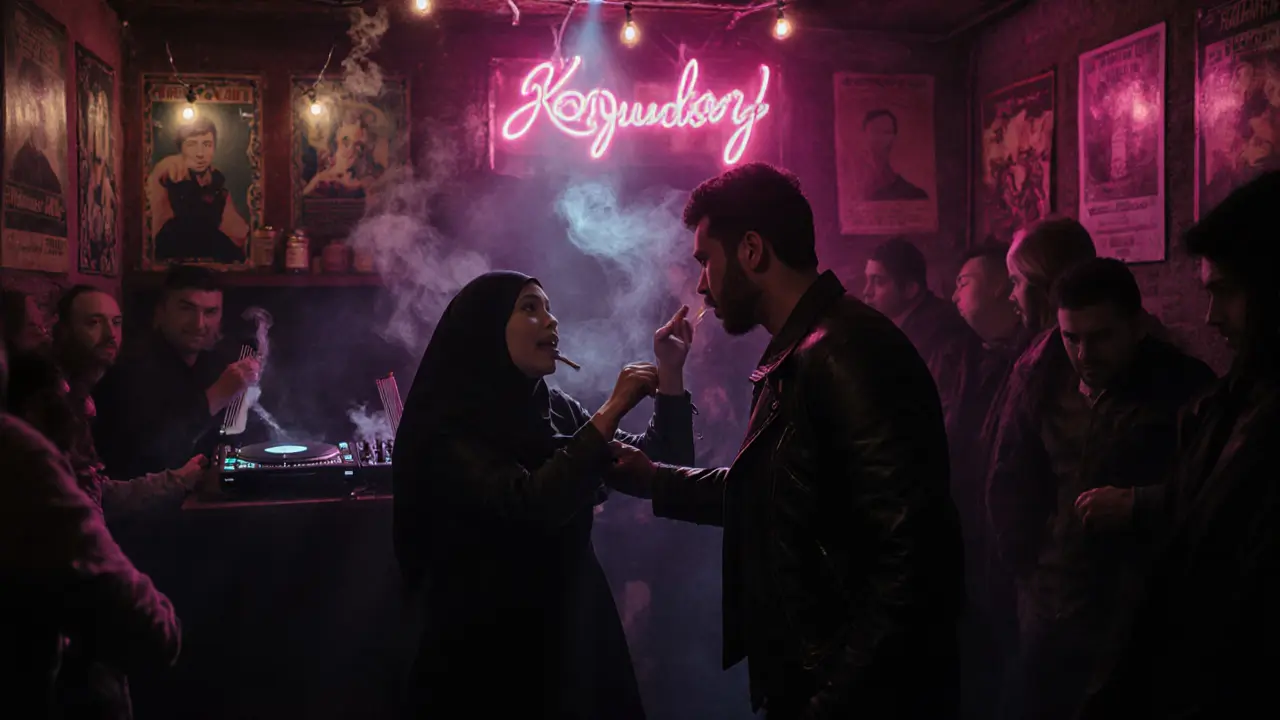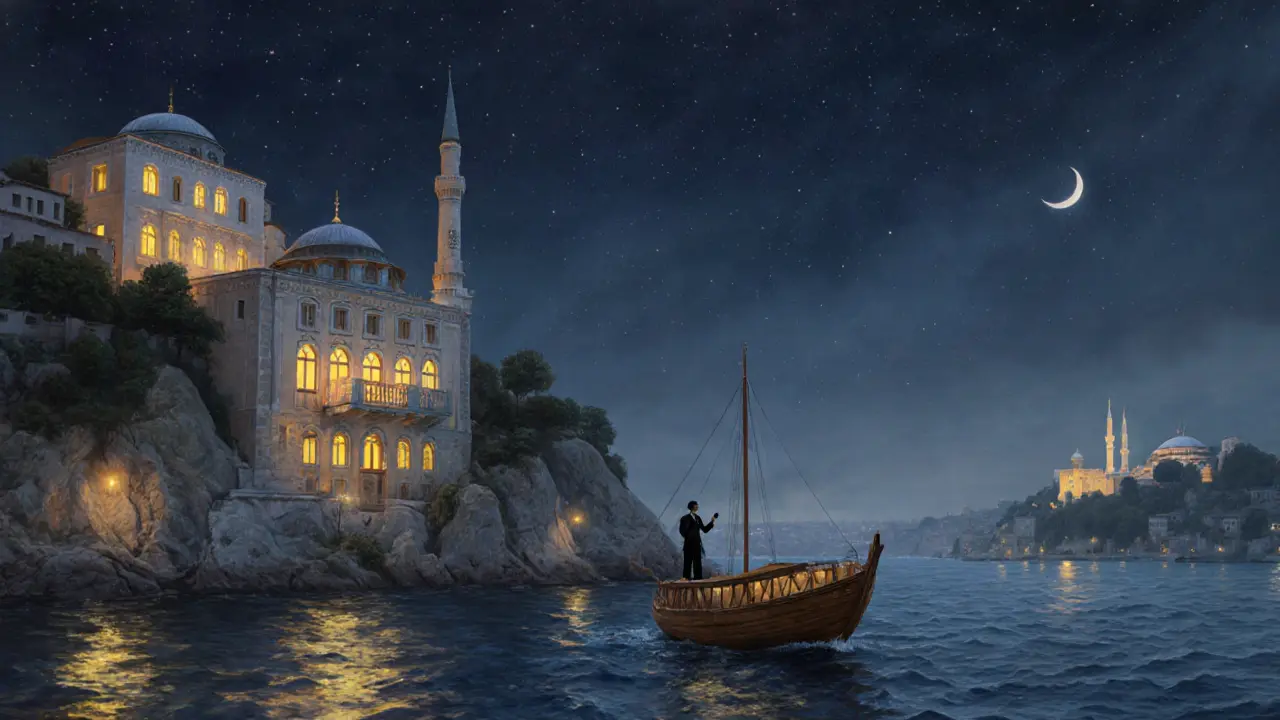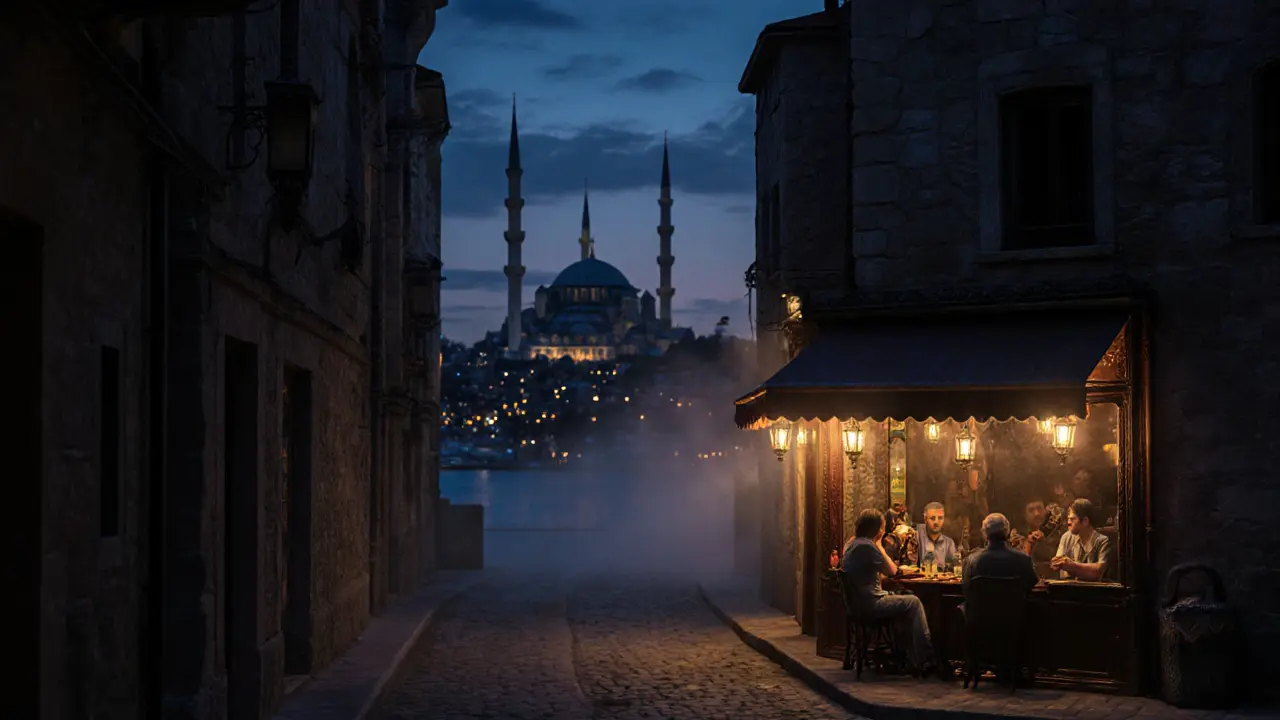When the sun sets over the Bosphorus, Istanbul doesn’t sleep-it transforms. One moment you’re walking past centuries-old minarets, the next you’re standing in a neon-lit club where electronic beats mix with the sound of a ney flute drifting from an open window. This city doesn’t just have nightlife; it layers it. Tradition and modernity don’t compete here-they dance together, sometimes in the same room.
Where the Past Still Sings
You don’t need to go far to find Istanbul’s soul after dark. In the narrow alleys of Kadıköy or the historic district of Sultanahmet, traditional Turkish entertainment still thrives. Head to a göksu or meyhane-a classic Turkish tavern-and you’ll find locals gathered around wooden tables, sipping raki with ice and water, turning cloudy white as it mixes. The air smells of grilled octopus, grilled cheese, and cigarette smoke that lingers like a memory.At places like Asitane in Edirnekapı or Ali Naci Karacan in Beyoğlu, live performances of Ottoman classical music unfold. A tanbur player plucks ancient melodies while a darbuka drummer keeps time with hands worn from decades of rhythm. These aren’t tourist shows. These are family traditions. Elders nod along. Younger people scroll on their phones-but still pause when the hazne begins.
Some of these venues have been around since the 1800s. The owner of Çiya Sofrası in Kadıköy still serves dishes his grandfather cooked, and the same man who played the kemençe here in 1995 still shows up on Friday nights. There’s no marketing. No Instagram filters. Just sound, smell, and silence between notes.
The Neon Pulse of Beyoğlu
Walk up İstiklal Avenue after 10 p.m., and you’ll feel the city’s heartbeat quicken. The tram rattles past vintage lampposts, but the real energy is in the side streets-Cihangir, Nisantasi, and especially the maze of alleys behind Galata Tower. Here, Istanbul nightlife becomes a global experiment.One block, you’re in a speakeasy hidden behind a bookshelf, sipping a craft gin infused with sumac and rosewater. The next, you’re in a basement club where Turkish hip-hop artists freestyle over beats sampled from 1970s Anatolian rock. DJs don’t just play songs-they tell stories. A track might start with a Sufi chant, then drop into a techno bassline that shakes the floor.
Bars like Bar 66 and Chaplin have become landmarks not because they’re the loudest, but because they feel alive. You’ll see Turkish students in vintage coats, German backpackers with sketchbooks, Syrian musicians on break from their gigs, and retired professors debating politics over single-malt whiskey. No one checks your ID twice. No one asks where you’re from. You’re just another face in the crowd.
On weekends, the streets fill with people dancing under string lights. Street performers play ouds and accordions. A woman in a hijab might be dancing with a man in a leather jacket. No one stares. No one comments. It’s just how it is.

The Bosphorus After Dark
If you want to see Istanbul from another angle, hop on a seyahat gemisi-a night cruise along the Bosphorus. These aren’t the flashy, overpriced tourist boats. The real ones leave from Eminönü or Beşiktaş around 9 p.m., with no lights on the deck, no loud music, just the quiet lap of water against wood.As the boat glides past the illuminated palaces of Dolmabahçe and the dark silhouettes of Rumeli Fortress, you’ll see lights flickering in windows of homes built into the cliffs. Some families eat dinner on balconies. Others sit with tea, watching the ships pass. A few even sing along to old Turkish ballads playing from inside.
On the water, the city feels different. Less crowded. More intimate. You can hear the call to prayer from the Fatih Mosque echo over the water, then moments later, the distant thump of a club in Kuruçeşme. The past and present aren’t just side by side-they’re breathing together.
Hidden Gems and Local Secrets
Most guidebooks miss the real spots. The ones locals only tell you about after three glasses of raki.In the quieter neighborhood of Arnavutköy, there’s a tiny bar called Yazgülü that only opens on Thursdays. No sign. No website. You find it by asking for the place with the red door and the cat on the windowsill. Inside, a former jazz pianist from Ankara plays old standards on a dusty upright piano. No drinks are named. You just say what you want-whiskey, tea, or a glass of homemade plum brandy.
Or try Yeni Bahar in Fatih, a 70-year-old meyhane where the owner still makes his own pickled vegetables and serves them with warm flatbread. The walls are covered in photos of musicians who played here in the 1980s. One photo shows a young Fazıl Say, before he was famous, holding a bağlama and grinning.
Even the night markets have character. The one in Kadıköy doesn’t sell fake souvenirs. It sells grilled mackerel, fresh figs, hand-rolled baklava, and old records from the 1960s. You can buy a vinyl of Sezen Aksu’s first album and a bag of roasted chestnuts for less than ten dollars.

What Makes Istanbul’s Nightlife Different?
It’s not just the mix of cultures. It’s the rhythm. In Paris, nightlife ends at 2 a.m. In Berlin, it starts then. In Istanbul, it never really stops. But it changes.At 1 a.m., the clubs are loud. At 3 a.m., the kebab shops are louder. At 5 a.m., the fishermen are unloading their catch at the port. And by 6 a.m., the first call to prayer begins-and a few people still in the streets walk to the mosque, still wearing their party clothes.
This isn’t a city that separates day from night. It blurs them. You can start your evening with a classical concert at the Istanbul State Opera, then end it with a street vendor handing you a warm simit and a cup of Turkish coffee at sunrise.
There’s no single "best" night out here. The magic is in the contrast. The way a muezzin’s voice rises over the bassline of a techno track. The way a grandmother in a headscarf laughs with her granddaughter at a rooftop bar, both sipping the same drink-raki, diluted with water, ice clinking like a clock.
What to Expect When You Go
- Dress casually. No one cares if you’re in jeans or a dress. But avoid shorts in traditional areas like Sultanahmet after dark. - Raki is the drink of choice. Don’t be afraid to try it. It’s not as strong as it looks-just slow down, sip with water, and let the flavor unfold. - Cash still matters. Many small bars and street vendors don’t take cards. Keep lira on hand. - Nightlife starts late. Don’t show up at 9 p.m. expecting a packed club. Most places come alive after midnight. - Be curious. Ask someone where they like to go. Locals love sharing their spots. You’ll get more than a recommendation-you’ll get a story.There’s no checklist for Istanbul’s nightlife. No "must-visit" list that captures it. It’s not about ticking boxes. It’s about wandering, listening, and letting the city guide you.
Is Istanbul nightlife safe for solo travelers?
Yes, Istanbul’s nightlife is generally safe for solo travelers, especially in popular areas like Beyoğlu, Kadıköy, and along the Bosphorus. The city has a strong police presence in tourist zones, and locals are often helpful. Avoid poorly lit alleys after 2 a.m., and don’t accept drinks from strangers. Most bars and clubs have security, and public transport runs late. Trust your instincts-you’ll notice quickly if a place feels off.
What’s the best time of year to experience Istanbul’s nightlife?
Late spring (May to June) and early autumn (September to October) are ideal. The weather is mild, outdoor terraces are open, and the crowds aren’t as thick as in summer. July and August can be sweltering and packed with tourists. Winter nights are quieter but magical-especially along the Bosphorus, where the air is crisp and the lights reflect on the water.
Do I need to speak Turkish to enjoy the nightlife?
No, but knowing a few phrases helps. Most bartenders and club staff in tourist areas speak English. But in traditional meyhanes or hidden spots, a simple "Teşekkür ederim" (Thank you) or "Ne var?" (What’s up?) opens doors. Locals appreciate the effort. Many will switch to English to help you-but you’ll get better stories if you stick around and try.
Are there any dress codes for Istanbul nightclubs?
Most clubs are casual. Jeans, t-shirts, and sneakers are fine. Upscale venues like Reina or Karaköy Lokantası might expect smart-casual-no flip-flops or tank tops. But there’s no strict dress code. The real rule? Be respectful. If you’re entering a traditional venue with live music, avoid overly flashy or revealing clothing. Locals dress to feel comfortable, not to impress.
How much should I budget for a night out in Istanbul?
You can have a full night out for under 200 Turkish lira (about $6). A meal at a meyhane costs 80-120 lira. A drink at a trendy bar? 30-50 lira. A night cruise? Around 150 lira. Street food and local bars are cheap. Clubs with cover charges might ask 50-100 lira, but many don’t charge at all. Skip the tourist traps on İstiklal Avenue-head to side streets for better prices and better vibes.
If you want to understand Istanbul, don’t just visit its mosques and palaces. Stay until midnight. Walk where the lights are dimmer. Listen to the music that doesn’t make it onto playlists. This city doesn’t reveal itself in daylight. It whispers in the dark.
